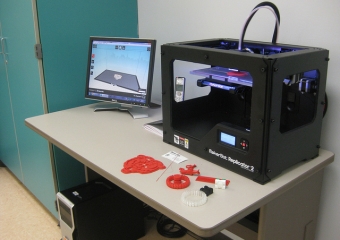

Photo by Kevin Jarrett is licensed under CC BY 2.0
Americans are passionate about education, but global educational rankings for the United States are dismal. The Organization for Economic Co-operation and Development (OECD) tested math and science accomplishments of 15-year-old students in 76 countries and the United States did not fare well. Singapore ranked “best in the world” and Hong Kong placed second. South Korea, Japan and Taiwan followed in rather close order. The United States came in 28th…not even in the top one-third.
Education is a hot topic throughout the country as everyone is aware that the United States has slipped significantly in global rankings. Educators, administrators, parents and elected officials are all involved in re-evaluating how K-12 school has traditionally worked and how it should be changed.
And, change is occurring. New concepts and theories are being tested. Technology is being upgraded and millions of students are benefiting from all the attention. But, there is so much controversy that one has to wonder if it can be contributing to the overall problem of student achievements and global rankings.
Passions run extremely high and there is little consensus in dozens of areas. Some of the greatest controversy is centered on the following:
- Acceptance of common core standards;
- Corporal punishment;
- Abandoning letter grades;
- Bilingual education;
- Teaching creation or evolution;
- Textbook controversies;
- Teacher evaluations;
- High-stakes testing;
- Online curriculum;
- Prayer, Pledge of Allegiance, flags; and
- Sex education.
With all the energy and emotion that is being expended on these controversial issues, it may be possible that math, science and technology have been neglected. At least, something is lacking if United States students rank this low when compared to students in other countries.
But, there is some good news, too. Schools in the United States appear to be embracing educational technology in a big way. The use of technology in classrooms, as well as making personalized technology devices available to students, is now almost commonplace. Even so, it’s hard for schools to keep up with technology advances. At one time, 3D printing seemed to be no more than an incredibly expensive product. However, now 3D technology has found a place in K-12 classrooms and teachers are using it to enhance hands-on learning and capture the interest of students. For instance, in biology, teachers print out 3D models of the human heart and students can hold the structures in their hands as they identify the various parts of a heart.
Video conferencing is also becoming commonplace. Some classrooms schedule conversations with students in other parts of the world. Soon, students from different countries will begin to collaborate on projects and the world will open up to many in an entirely new way.
Another key trend in education technology is software that advances adaptive learning. The software caters to students’ individualized learning needs. It allows students to proceed at their own pace and receive extra help or time if it is needed. This builds confidence and does not push students into generalized timelines.
One of the most successful programs is the nation is simply called STEM – an acronym for science, technology, engineering and mathematics. The United States is a global leader in this arena and the program encourages students to pursue careers in the fields of science, technology, engineering and math. Georgia created an Innovation Fund that offers grants to schools that implement innovative STEM teaching technology. Many other states are also aggressively building STEM programs. This should bode well for the country’s global rankings in the future.
